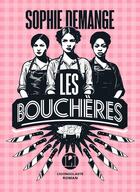-
Nombre de pages : (-)
-
Collection :
(-)
-
Genre :
(-)
-
Thème :
Non attribué
-
Prix littéraire(s) :
(-)
Résumé:
Imagine you're in a museum. You might spot a gargantuan four-poster bed that was a 16th century pub tourist attraction or a threadbare sackcloth robe worn in church by a 17th century adulteress. Yet despite their rarity, we often fail to engage with these extraordinary objects. We simply nod and... Voir plus
Imagine you're in a museum. You might spot a gargantuan four-poster bed that was a 16th century pub tourist attraction or a threadbare sackcloth robe worn in church by a 17th century adulteress. Yet despite their rarity, we often fail to engage with these extraordinary objects. We simply nod and move on. But it doesn't have to be that way. Through its 26 Treasures project, writers' collective 26 is exploring how to create emotional connections between objects and individuals.
In 2010, London's Victoria & Albert museum chose 26 objects from its British Galleries and randomly assigned them to 26 writers. Each person wrote exactly 62 words - 26 in reflection - in response to the object.
The results were beautiful, surprising, lyrical, sometimes comical. Andrew Motion wrote about a bust of Homer, a 17th century Chinese porcelain figure reminded a writer of a pub landlord in Inverness, while the wedding suit of James 11 inspired 62 words about 'a suit as full of scratches as a rose-garden'.
In 2011 they took the idea to the National Library of Wales, the Ulster Museum and the National Museum of Scotland, where writers were let loose on objects as disparate as a mediaeval illuminated book, a beggar's badge and a 16th century Scottish guillotine. It seems that all writers and readers treasure connections with the past through objects - personal ones and those displayed in museums. There are more than a hundred writers involved in this collection, including many of the best-known literary authors in England, Scotland, Wales and Northern Ireland.
The result is an exquisite illustrated book, where the 104 objects and their accompanying sestudes appear side-by-side.
Donner votre avis














